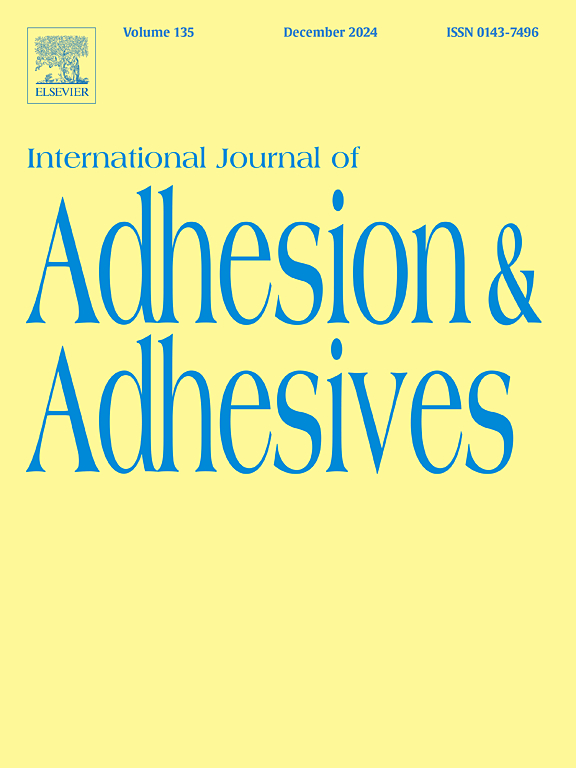Certification of adhesively bonded structures: Review and outlook
IF 3.5
3区 材料科学
Q2 ENGINEERING, CHEMICAL
International Journal of Adhesion and Adhesives
Pub Date : 2025-04-25
DOI:10.1016/j.ijadhadh.2025.104041
引用次数: 0
Abstract
There is increasing interest in achieving unprecedented levels of eco-efficiency. Consequently, many industries, including the aircraft, construction, automotive, naval, offshore, and wind energy sectors, aim to lighten structures by combining or replacing metals with composites. Adhesive bonding is the most promising joining technology regarding weight and performance, but its application remains largely limited to secondary, non-safety-critical structures in many industries. The main reasons for this limited acceptance of adhesive bonding are our restricted knowledge of the associated key manufacturing parameters, non-destructive inspection techniques, damage tolerance methodologies, and tools for diagnosis and prognosis of structural integrity. Certification of a product, service, or system is the provision, by an independent body, of a written assurance that the product, service, or system under consideration meets specific requirements. The present paper reviews for the first time, the relatively unexplored topic of the certification of adhesively bonded structures in the four broader industrial sectors: civil aviation, construction, maritime, and automotive. After highlighting the goals of this study, we discuss several elements involved in the certification process: material compatibility, bonding process, component design, manufacturing, physical tests, and simulation. This work is intended to serve as a roadmap for developing certification schemes for primary adhesively bonded structures to increase the acceptance level of adhesive bonding in various industries.
粘接结构的认证:回顾与展望
人们对实现空前的生态效率越来越感兴趣。因此,许多行业,包括飞机、建筑、汽车、海军、海上和风能部门,都旨在通过用复合材料结合或取代金属来减轻结构。就重量和性能而言,粘接是最有前途的连接技术,但在许多行业中,它的应用仍然主要局限于次要的、非安全关键的结构。我们对相关的关键制造参数、无损检测技术、损伤容限方法以及结构完整性诊断和预测工具的了解有限,这是胶接技术被有限接受的主要原因。产品、服务或体系的认证是由独立机构提供的书面保证,证明所考虑的产品、服务或体系符合特定要求。本文首次回顾了在四个更广泛的工业部门:民用航空、建筑、海事和汽车中粘接结构认证的相对未开发的主题。在强调了本研究的目标之后,我们讨论了认证过程中涉及的几个要素:材料兼容性、粘合过程、组件设计、制造、物理测试和模拟。这项工作的目的是作为开发初级粘接结构认证方案的路线图,以提高粘接在各个行业的接受水平。
本文章由计算机程序翻译,如有差异,请以英文原文为准。
求助全文
约1分钟内获得全文
求助全文
来源期刊

International Journal of Adhesion and Adhesives
工程技术-材料科学:综合
CiteScore
6.90
自引率
8.80%
发文量
200
审稿时长
8.3 months
期刊介绍:
The International Journal of Adhesion and Adhesives draws together the many aspects of the science and technology of adhesive materials, from fundamental research and development work to industrial applications. Subject areas covered include: interfacial interactions, surface chemistry, methods of testing, accumulation of test data on physical and mechanical properties, environmental effects, new adhesive materials, sealants, design of bonded joints, and manufacturing technology.
 求助内容:
求助内容: 应助结果提醒方式:
应助结果提醒方式:


